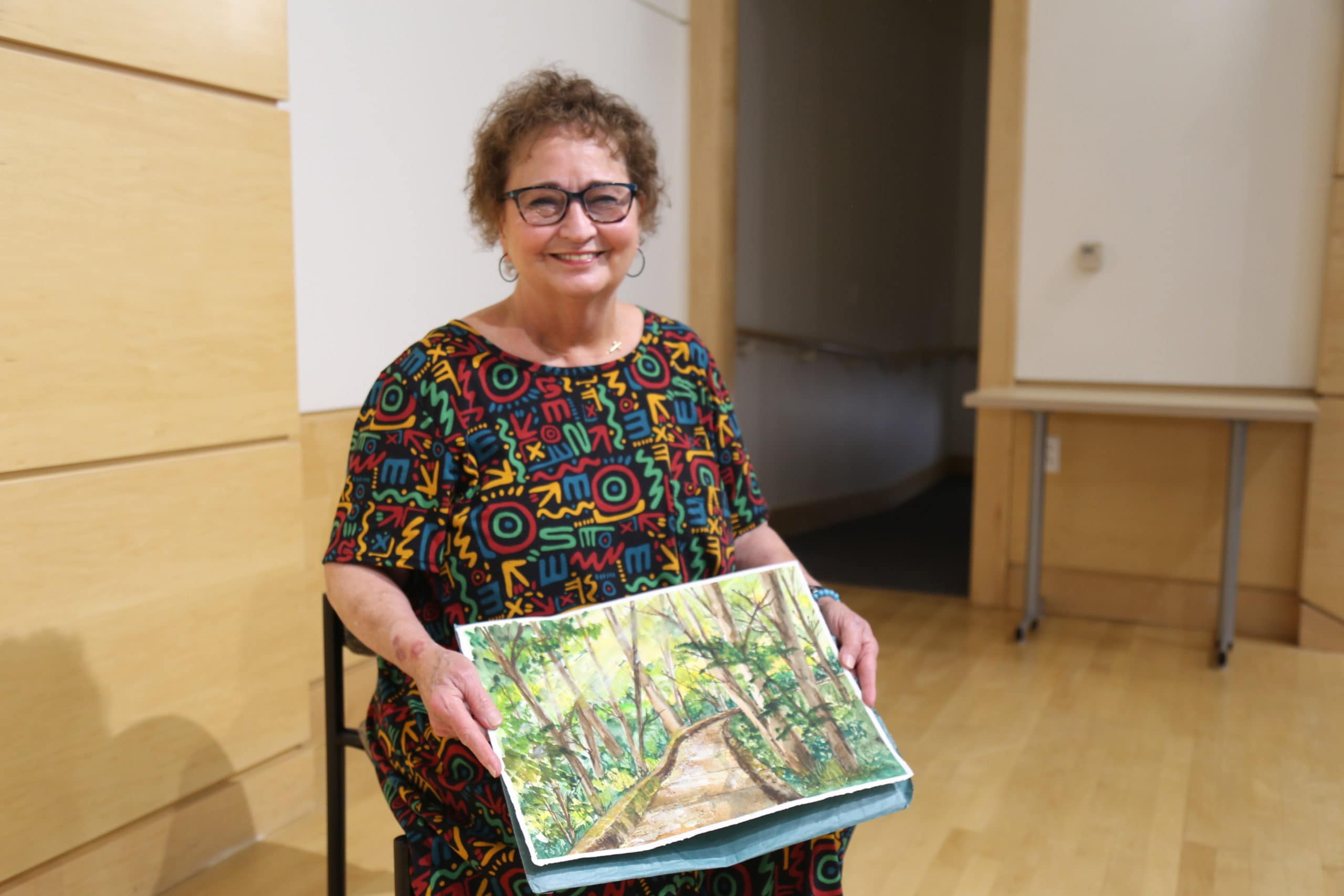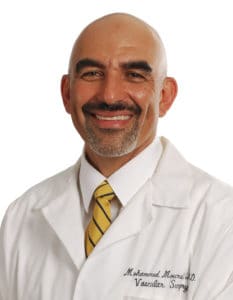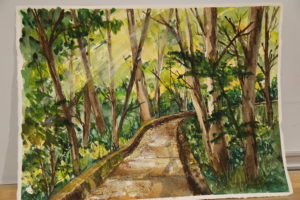UAMS Aortic Center Uses Advanced Treatment to Save LR Artist
| Linda Yates has long found comfort in her art, and one of her latest creations holds a particularly special meaning. Before she retired, the Little Rock woman spent years as a graphic artist and ran her own business for 17 years.
“I thought I’d paint a lot more once I retired, but then things started happening,” Yates said.
Those things began June 10, 2020. Yates went to the emergency room with severe back and abdominal pain. UAMS’ Chief of Vascular Surgery Mohammed Moursi, M.D., was there. He quickly ordered a CT scan and saw her aorta had ruptured — a life-threating situation.
“We rushed her to the operating room and put a stent graft in, meaning we covered the hole in the aorta from the inside using wires, saving her life,” Moursi said.
“He saved my life,” she said. “I get emotional thinking about it.”
Yates had started a nature painting before that June 10 emergency room visit. The water colors depict a peaceful path winding through a forest with warm sunbeams bursting through tree branches. She remembers thinking to herself in the hospital, “I am not going to finish that painting until I know I am okay.”
Once Yates was out of surgery, Moursi took a closer look at the scans.
“Not only had her aorta ruptured, but it was also infected,” he said. “We prescribed antibiotics so that her body would be able to settle from the operation and fight the infection before we went back in to fix her aorta.”
Yates was on intravenous antibiotics for 40 days.
“It felt like a long time,” Yates said. “But I knew they had to make sure all the infection was gone. The stent was basically serving as a Band-Aid.”
On July 23, Yates came back for the second surgery. Moursi removed the stent graft he put in during the emergency surgery and then he reconstructed her aorta using a piece of vein from her thigh.
UAMS is one of a few places in the country that uses this method, Moursi said. The technique, called neoaortoiliac system, or NAIS, has been refined during the past 20 years and represents a major advance in the treatment of aortic graft infections, according to this abstract from the National Library of Medicine.
“We take a vein from the thigh and reconstruct an aorta using the vein,” Moursi said. “What we used to do is put another piece of plastic in that area of the aorta. But since there was infection, the synthetic graft is also subject to infection. But a vein has a low chance of becoming infected. This was the best operation for Mrs. Yates.”
The vascular surgeons at UAMS are well-prepared for challenging operations like NAIS. To streamline care, UAMS recently launched a centralized Aortic Center, which offers the most advanced vascular surgery practice in the state. The center allows for early and complete diagnosis, appropriate medical or surgical management, and long-term follow up.
In the weeks and months to come, Yates would return to UAMS for other medical emergencies including inflammation in her pancreas. Moursi consulted with his general surgery and biliary surgery colleagues at UAMS for the best course of treatment, which eventually involved Moursi, who is also board-certified in general surgery, performing a partial pancreatectomy.
“That was a life-saving operation there, too,” Yates said.
The staff at the Aortic Center became like family to Yates as there were still visitor restrictions at the time of her surgeries.
“I can’t say enough about the vascular team at UAMS,” she said. “I saw more of them than I did my family last year. After five operations in 2020, I trust Dr. Moursi and love him to death.”
Along with her capable care team, Yates says keeping a positive attitude and a sense of humor helped her through the dark times of her illness and recovery. She also used the idea of finishing her painting as motivation. She completed it earlier this year.
“I looked at the finished project and said, ‘You’re gonna be okay.”’


